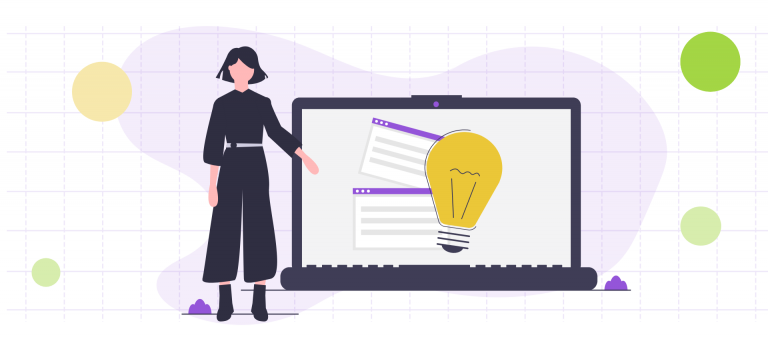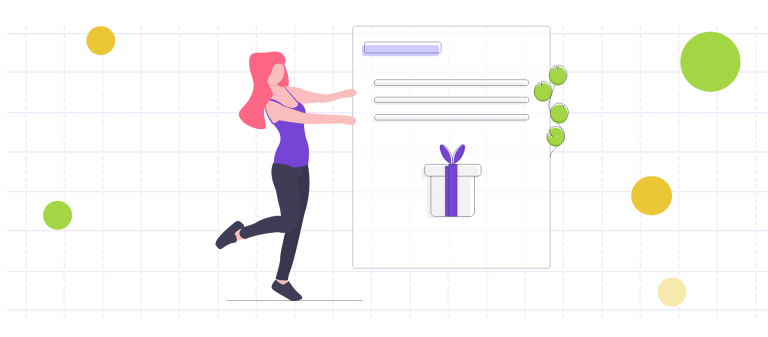The Complete Guide to Artificial Intelligence for Nonprofits

Technology for nonprofits is more powerful and accessible today than ever before.
The rise of Artificial Intelligence (AI) has given nonprofits a serious competitive advantage when it comes to pursuing their mission and raising more money. But the term “Artificial Intelligence” is still enough to scare many people off.
At Keela, we believe that AI is changing the way nonprofits work – for the better. We see a bright future where accessible, cutting-edge tools serve the nonprofit sector in multiple ways, from automating administrative tasks to advising on fundraising outreach. That’s why our new software includes a suite of nonprofit intelligence tools to help organizations make better decisions.
Nonprofits are just starting to dip their toes in the proverbial water, so it’s completely normal if you’re struggling to stay afloat in the sea of change AI could bring to your organization. At this point, you might be wondering:
- Do I really need AI for my nonprofit?
- How can AI help me achieve my goals?
- What set of skills do I need to embrace the benefits of AI?
Don’t worry. We’re here to throw you a life raft. This post will cover the basics of AI for nonprofits and intend to resolve all doubts you might have about this promising technology.
Let’s dive in!
Before diving into the wonders that AI can help you achieve, it’s important to clarify some key concepts.
When someone mentions Artificial Intelligence, what is the first thing that comes to your mind? Sci-fi movies with shiny robots taking over the world?
The truth is that the concept of AI has been around for decades, and it’s all very real. The term “Artificial Intelligence” was coined in 1956 by John McCarthy, a Stanford University emeritus professor of Computer Science. Known as the “father of AI,” he defined this technology as the science and engineering of making intelligent machines.
Although AI has been around for quite a long time, it’s just becoming more powerful today. And that’s mainly for two reasons. First, there’s more data to process and analyze than ever before. Second, computing power has improved dramatically over the last two decades.
What is Artificial Intelligence?
Put simply, Artificial Intelligence is the ability of a computer to perform tasks commonly associated with intelligent beings. This means machines that are capable of thinking, acting, and learning just like humans.
Does this mean machines will soon start to behave on their own? Not really. We are still very far away from reaching this point. While computers are getting more powerful, they still lack what makes us humans: Cognitive intelligence. So, for now, machines are only capable of carrying out simple tasks to make our life easier.
Whether you realize it or not, AI is already part of your daily life. AI is the reason why Netflix recommends that you watch Mamma Mia over Kill Bill. AI is the tool behind real-time translation when you’re speaking with a stranger in a foreign country. It’s also your day-to-day assistant when you’re looking for the least congested route to your favorite restaurant.
What is Machine Learning
When reading about AI, you've probably also come across the concept of Machine Learning (ML). Although the two terms are often used interchangeably, they are not the same.
Machine Learning is an application of artificial intelligence that allows machines to learn from data and self-improve.
Basically, it’s a tool to identify patterns among large datasets and predict outcomes.
Humans have limited time and resources to process and analyze huge datasets (also known as Big Data). The beauty of ML is that it can extract insights from these complex datasets within minutes. For instance, it gives nonprofits the ability to study how their giving history is evolving, and use these findings to predict when donors are most likely to give.
Why Should Nonprofits Embrace Artificial Intelligence?
It’s clear that AI and Machine Learning can do A LOT for your organization. But artificial intelligence raises a lot of questions around how it will impact human jobs.
Will AI replace humans in the workplace entirely? Probably not. Once you take the time to understand its benefits, you’ll see that AI has positive implications for nearly every industry – including nonprofits.
A recent study shows that 89% of nonprofit professionals believe AI can make their organization more efficient. AI can enhance your services, expand your social impact, and even save lives.
Here are a few reasons why nonprofits should embrace artificial intelligence:
1. Automate Time-Consuming Work
AI is not here to replace you but to elevate you.
By analyzing vast amounts of data in a short period, AI can assist you in making informed decisions. Artificial Intelligence-based tools can alleviate the burden of mundane, repetitive tasks such as monitoring financial transactions and detecting discrepancies in your data.
AI can also predict donor behavior and forecast giving trends, allowing you to quickly tailor your fundraising campaigns to a specific audience without sifting through data for hours.
With more time back in your day, you can focus on what matters – building relationships. As Allison Fine and Beth Kanter put it, “If technology creates value in a human-centered way, then we will have more time to be people-centric.” You and your staff will always be the ones making human connections – AI just makes it easier for you to make it a priority.
By automating administrative tasks, AI is not killing jobs. Instead, it acts as a smart assistant to enhance your work, helping you prioritize human connections and do more good.
2. AI Is Becoming Accessible
Nonprofit AI solutions are reaching less than 23% of nonprofits today. And this statistic is not surprising. When it comes to tech adoption, nonprofits have always lagged behind. But the truth is that very few accessible solutions were available to the sector until now.
AI is no longer a complicated tool built exclusively for large tech companies, data scientists, and engineers. Organizations in every industry, from healthcare to finance to nonprofits, now have access to AI-based tools at affordable prices.
Nonprofit CRM providers like Keela are not only embracing AI-powered technology, but they are making it accessible for every organization – small or large, novice or experienced. Starting at $49 a month, Keela’s CRM integrates with a whole suite of intelligence tools, including Donor Insights and Campaign Recommendations.
This means that the most innovative CRMs are getting incredibly powerful, going beyond a simple database of relationships for a low price point. This recent development will allow for the wider adoption of AI across the nonprofit sector.
3. AI Helps You Make More Sense of Your Data
You already have access to a vast wealth of data - whether you keep it spread across numerous Excel spreadsheets or organized within a CRM. But how often can you spend time combing through that data to extract useful information?
AI empowers you to act on data in more meaningful ways. It combs through your database to find patterns and trends that will improve your programs and campaigns.
AI can help your nonprofit strengthen your fundraising performance, identify your top donors, and create marketing campaigns that will get you the biggest bang for your buck.
4 Ways AI Helps Nonprofits Achieve Their Mission
It’s clear that Artificial Intelligence and Machine Learning technology are redefining the nonprofit landscape. Now, let’s look at four use cases that show how AI can help nonprofits raise more money and understand their donors in new ways.
1. Mission-Based AI Tools Boost Nonprofit Impact
Nonprofits can use AI-powered technology to improve the way they solve societal and ecological challenges. Take a look at these examples:
Example 1: Crisis Text Line
One of the most impressive applications of mission-based AI is the algorithm used by Crisis Text Line to predict suicide risk by analyzing online conversations.
The organization trained a Machine Learning model using conversations tagged with “Suicide” by the organization’s Crisis Counselors. By analyzing 65 million text messages, the AI model recognizes what words are most statistically associated with a high risk of suicide.
Thanks to this tool, the organization can prioritize high-risk messages and is now able to service 94% of high-risk texters in under 5 minutes. Considering that every minute of response time matters, this is a game-changer for Crisis Text Line.
This is just one example of how AI provides new ways of approaching problems and improving people’s lives.
Example 2: Medecins Sans Frontieres
Medecins Sans Frontieres is on a mission to fight the spread of antimicrobial resistance and grant equal access to proper diagnosis all over the world. With that aim, they use an image recognition model to provide the right antimicrobial treatment to patients in low-resource areas.
Non-expert staff can analyze anti-microbial images through a free, offline smartphone application – the ASTapp. The application performs the analysis and provides advice for appropriate treatment.
We could go on forever, showing you the incredible impact AI can have on the nonprofit sector. But the most important thing to remember is that AI is not only helping nonprofits achieve their mission. It’s also empowering nonprofit professionals to fundraise more effectively and understand their supporters like never before.
2. AI-Powered Fundraising Tools Help You Understand Your Supporters
AI can process huge amounts of data relatively quickly. In the nonprofit world, this means you can use AI-powered tools to go through previous donation amounts, event attendance records, and volunteer shifts.
So you can get a true understanding of your supporters’ giving history and interests, giving you insight into valuable information such as: When to solicit a donation and What campaigns a donor might be interested in. The best part is that this technology can be integrated directly into your CRM – no need for costly add-ons.
Example: Keela’s Donor Readiness tool
For instance, Keela’s CRM offers an AI-based feature called Donor Readiness to help customers understand their donor pool.
Donor Readiness tells you how likely your donor is to donate within the next two weeks. We calculate Donor Readiness through a Machine Learning algorithm that analyzes contact interactions, giving history, and even variables like contact location and weather.
There is no common ground when it comes to defining when is the best time to reach out to donors. Yet, good timing greatly maximizes the chances of giving. There is no doubt this tool will boost your fundraising results.
3. AI Helps You Engage More Efficiently With Your Audience
There’s no doubt that investing in personalization will take your organization up a notch.
If you’re a Spotify aficionado, you’ve probably seen their “Wrapped” feature (if not, check it out – it’s amazing). This is the perfect example of hyper-personalized content, powered by AI.
Just like you and me, donors appreciate a little personal touch that shows you care about them and their interests. But without the right technology, personalization can be overwhelming and extremely time-consuming. If you’ve ever sent hand-written thank you cards to 250 people who attended your annual gala, you know what we’re talking about.
With all the digital noise, it’s getting harder to make your content stand out and keep your audience’s attention. If you don’t take the time to personalize your messages, you’re more likely to send irrelevant content and lose your donors’ interest.
So how can AI help you meet your donors’ expectations?
AI solutions can not only help you send meaningful content to the right audiences but also help you understand when it’s the best time to reach out and what communication channels you should use.
Such AI-powered tools streamline your communication strategies to align with the interests of every supporter while reducing the need for manual work. For example, an animal welfare organization can use AI to send personalized event invitations to supporters who show interest in a “clinic puppies” program versus an “adopt a kitten” program.
Example: Persado
Some nonprofits are using Persado to automate their communication channels with personal and authentic content.
Persado uses AI to understand language and make recommendations to tailor content to a specific audience. Basically, they analyze emotion, descriptions, calls-to-action, formatting, and word positioning. Based on the data, Persado tells you if certain words and sentences resonate with your audience or turn them away. Such tools can be used for a wide range of content formats, from email subject lines to Facebook ads.
4. AI Tools Reduce Your Administrative Burden
Imagine how much you could get done if you had a virtual assistant to manage time-consuming (but necessary) tasks like scheduling, organizing, and reporting. AI can automate tedious tasks, freeing up your time to do what’s at the heart of your work: Achieving your mission.
You can use AI not only to streamline financial processes – such as automating the categorization of accounting data and facilitating data collection – but also to detect issues in CRM data and even automate customer service.
Example: AI-Powered Chatbots
Many nonprofits are now using chatbots to automate conversations with supporters
who have basic questions or want details about a particular campaign. In a world where users expect to get answers in seconds, being able to hold conversations 24/7 through an AI chatbot is a true asset for nonprofits.
Chatbots “read” and process users’ words and give an instant pre-programmed answer. You can set up a chatbot to answer common queries like, “How to contribute money,” “Learn about upcoming programs,” and “How to volunteer.” You can set up a chatbot on social platforms like Facebook Messenger or embed one on your website.
When powered by AI, chatbots are smart enough to remember users’ preferences or even address random requests. AI makes online interactions feel like a real conversation between two people. Plus, chatbots become smarter with time because they learn from past questions and answers.
.svg)



